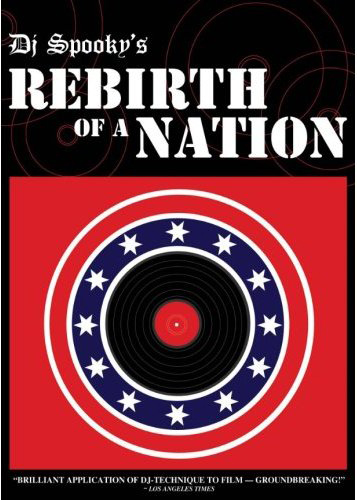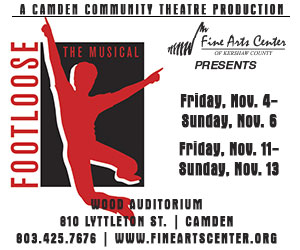Watching the Birth of a Nation (1915) is a chore.
Based on the novel The Clansman by Thomas Dixon, Jr. and directed by D.W. Griffith, the film is an dramatic and epic silent film that tells the tale of two prominent families, one from the North and one from the South. Proceeding from antebellum unity, both political and between the two families, and the horrors of the Civil War in Part I, it continues into the violent, untenable Reconstruction period which ends the familial and political reconciliation thanks to the Ku Klux Klan. It’s pretty painfully racist throughout, too.
Renowned for its cinematic innovations as well as for its powerful cultural impact upon its initial release, viewers usually have to grit their teeth to get through its nearly 200 minute runtime today. The power the film had as the first major full-length picture and the thrilling cinematic storytelling innovations it introduced are mostly lost on us, unless we’re looking for them, and the rampant historical inaccuracies, downright creepy use of blackface (used most often when white female characters are also in the scene), and outrageously blunt racism are shocking and alienating to audiences used to the likes of Selma (2014) and 12 Years a Slave (2013).
This disconnect is partly why, as DJ Spooky (née Paul Miller) insists, it is so important that we see and understand the film today. While there have many spirited debates about what it’s actual box office haul was, Birth of a Nation was easily the most popular film of its time, even as it faced boycotts (mostly north of the Mason-Dixon line) from the NAACP. It was the first film screened at the White House, where President Wilson purportedly said that it was like “writing history with lightning. And my only regret is that it is all so terribly true.” It is often credited with the resurgence of the Klan in the 1920s, and was used as a recruitment tool for the white supremacist group up until the 1960s.
What’s more, Birth of a Nation serves as one of the most powerful examples of the ways moving images can play an outsized, almost coercive role in how our society understands the world around us. DJ Spooky actually says that he was inspired to make the remix by watching 24 hour news coverage of the Iraq War and Hurricane Katrina, noting the present-day way narratives of race and power are constructed by the stories told through moving images. This is his main entry point into his “remix,” Rebirth of a Nation (2007). Originally conceived and commissioned as a live performance by a number of arts festivals, including Spoleto USA, Miller’s goal was to apply the DJ turntable principles to film, cutting, splicing, and upending the film to different ends than the ones intended by its creator. More importantly, he also gave it a new, more dissonant score that fits modern sensibilities around the film much better. Eventually, these performances gave way to a full-length film, with the score performed by the Kronos Quartet in addition to Spooky himself.
Perhaps somewhat problematically, this remixed version of Birth of a Nation makes the whole experience easier to stomach. Cut almost in half to 100 minutes, a feat achieved partly through editing (much of Part I appears cut out) and partly through speeding up key sequences, the film rides its hypnotic score, which alternates between ghostly, oscillating synth lines, understated string parts, and the occasional high lonesome wail of harmonica, through its convoluted narrative with relative ease. While hardly spliced and diced to the extent that the term “remix” suggests, there are some nice use of lines and shapes as well as highlights, lens filters, and shifts in focus, which work as a kind of hip close-reading of the film as well. Those changes as well as the occasionally clunky voiceover allow audiences both a stronger and more comfortable sense of disconnect from the visceral experience of the film–as well as a means to critique and deconstruct some of the ways in which Griffith is manipulating us.
That being said, these interventions can often feel half-baked, particularly when long stretches go by with a mere lens filter shift or when scenes pregnant with meaning, like the two infamous near-rape scenes which gives the films its bizarre sexual charge, are left uncommented upon. The film shines brightest, actually, in its opening minutes when it connects the film’s politics of racism, fear, and extreme prejudice with heartbreaking news footage from the 21st century and (somewhat bluntly) overlays DJ Spooky’s thesis via voiceover. There are also key interventions in the name of historical accuracy, like during parts of the Reconstruction section, or times when the voiceover inserts an important cultural mythos being formed, like when the “superhero” white man fights off multitudes of free black men in the barn. In a film so fraught with meaning and multiple layers of meaning, it would have nice to see more of them though.
All in all, it’s difficult not to recommend this film, particularly if you’ve never seen the source material. It retains much of what’s important (and troubling) about the original while allowing an easier, quicker, and more critically distant position that makes the entire process ever-so-slightly less painful. And it’s important to understand this film if you want to understand the country’s history, present, and future. -Kyle Petersen
Rebirth of a Nation is screening at The Nickelodeon Theatre on Monday, January 19th at 7pm. For more information or to purchase tickets go here.







.jpg)